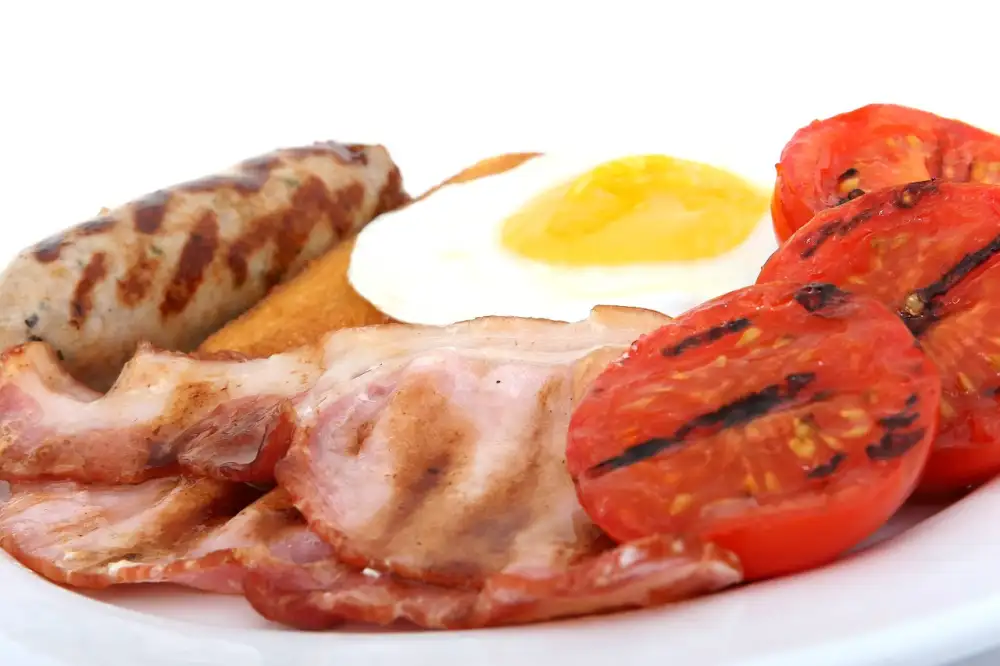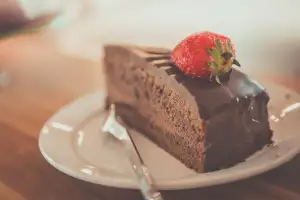Master the Art of Cooking Gammon: Step-by-Step Guide for Food Enthusiasts

Introduction to Cooking Gammon:
Gammon, a popular cut of pork, is a versatile and delicious meat that can be enjoyed in various dishes. Whether you're hosting a festive dinner or simply looking to elevate your everyday meals, mastering the art of cooking gammon will surely impress your guests. This step-by-step guide will walk you through the process of selecting the perfect gammon joint, preparing it for cooking, exploring different cooking methods, and providing tips for achieving a succulent and flavorful result. Get ready to embark on a culinary journey and unlock the secrets behind cooking gammon like a pro!
Selecting the perfect gammon joint
Selecting the perfect gammon joint is crucial for achieving a delicious and tender dish. When choosing your gammon, look for a joint that has a good amount of fat marbling throughout. This will help to keep the meat moist and add flavor during cooking. Additionally, opt for a joint that is firm to the touch and has a pinkish color. Avoid any joints that appear discolored or have a strong odor. Remember, quality is key when it comes to selecting the perfect gammon joint for your culinary masterpiece.
Preparing the gammon joint for cooking
Preparing the gammon joint for cooking is an essential step to ensure a delicious and tender result. Start by soaking the gammon joint in cold water overnight to remove excess saltiness. Before cooking, rinse the joint thoroughly under cold running water. Next, place the gammon joint in a large pot and cover it with fresh water. Add aromatics like bay leaves, peppercorns, and onions to enhance the flavor. Bring the water to a boil, then reduce the heat and simmer gently for about 20 minutes per pound of meat. Once cooked, remove the gammon joint from the pot and allow it to cool slightly before proceeding with your chosen cooking method.
Cooking methods for gammon
When it comes to cooking gammon, there are several methods you can choose from depending on your preferences and the equipment you have available in your kitchen. Here are three popular cooking methods for gammon:
a. Boiling gammon: This is a traditional method that involves simmering the gammon joint in a large pot of water. It's important to cover the joint with water and add aromatic ingredients like bay leaves, peppercorns, and onions to enhance the flavor. Boil the gammon for about 20 minutes per pound or until it reaches an internal temperature of 160°F (71°C).
b. Roasting gammon: Roasting is another delicious way to cook gammon and results in a beautifully caramelized exterior. Preheat your oven to 325°F (165°C) and place the joint on a rack in a roasting pan. You can add some liquid like apple juice or cider to keep the meat moist during cooking. Roast the gammon for about 20 minutes per pound or until it reaches an internal temperature of 160°F (71°C).
c. Glazing gammon: Glazing adds a wonderful sweet and savory crust to your gammon joint. After boiling or roasting, remove the skin from the joint, score the fat in a diamond pattern, and brush it with your favorite glaze such as honey mustard or maple syrup mixed with Dijon mustard. Increase the oven temperature to 400°F (200°C) and roast for an additional 15-20 minutes until golden brown.
These cooking methods allow you to experiment with different flavors and textures, so feel free to try them all and find your favorite way of cooking gammon!
Boiling gammon
Boiling gammon is a popular method of cooking that results in tender and juicy meat. To begin, place the gammon joint in a large pot and cover it with cold water. It's important to use enough water to completely submerge the joint.
Next, add aromatic ingredients such as bay leaves, peppercorns, and onions to enhance the flavor of the gammon. Bring the water to a boil over high heat, then reduce the heat to low and simmer gently for approximately 20 minutes per pound of meat.
Skimming off any impurities that rise to the surface during cooking will help ensure a clear broth. The gammon is ready when it reaches an internal temperature of 145°F (63°C). Use a meat thermometer to check for doneness.
Once cooked, remove the gammon from the pot and let it rest for about 10 minutes before carving. This allows the juices to redistribute throughout the meat, resulting in a moist and succulent texture.
Boiled gammon can be enjoyed as is or further enhanced by glazing or roasting. However, if you prefer a simpler preparation, you can serve it with mustard sauce or parsley sauce for added flavor.
Boiling gammon is an excellent method for those who prefer a more subtle taste without overpowering flavors. It's also a great option if you're short on time but still want deliciously cooked gammon.
Roasting gammon
Roasting gammon is a popular cooking method that brings out the rich flavors and succulence of the meat. To roast gammon, start by preheating your oven to 180°C (350°F). Place the prepared gammon joint on a roasting rack in a roasting pan, with the fatty side facing up. This allows the fat to baste the meat as it cooks, resulting in a moist and flavorful roast.
Before placing the gammon in the oven, you can score the fat in a diamond pattern using a sharp knife. This helps to release some of the excess fat during cooking and creates an attractive presentation once roasted.
To enhance the flavor, you can brush the gammon joint with a glaze of your choice. Common glazes include honey and mustard, marmalade, or brown sugar mixed with spices like cloves or cinnamon. Apply the glaze evenly over the surface of the gammon, making sure to cover all sides.
Once your oven is preheated and your gammon is prepared, place it in the center of the oven. Roast for approximately 20 minutes per pound (450g) of meat. For example, if you have a 2-pound (900g) gammon joint, it will take around 40 minutes to cook.
During cooking, baste the gammon every 15-20 minutes with its own juices or additional glaze. This helps to keep it moist and adds extra flavor. If you notice that the top is browning too quickly, you can cover it loosely with foil to prevent burning.
To ensure that your gammon is cooked thoroughly, use a meat thermometer inserted into the thickest part of the joint. The internal temperature should reach at least 70°C (160°F). Once cooked, remove from the oven and allow it to rest for about 10-15 minutes before carving.
Roasted gammon makes an impressive centerpiece for any meal. Serve it sliced thinly with roasted vegetables, mashed potatoes, and a tangy cranberry sauce for a classic holiday feast. The leftovers can be used in sandwiches, salads, or added to pasta dishes for delicious meals throughout the week.
By following these simple steps, you can achieve a perfectly roasted gammon that is tender, juicy, and bursting with flavor. So go ahead and master the art of roasting gammon to impress your family and friends with your culinary skills.
Glazing gammon
Glazing gammon is a wonderful way to add flavor and a beautiful caramelized finish to your dish. To glaze your gammon, you will need a mixture of ingredients such as honey, brown sugar, mustard, or even fruit preserves.
To begin, preheat your oven to 180°C (350°F). Take your cooked gammon joint and place it on a baking tray lined with foil. Score the fat in a diamond pattern, being careful not to cut too deep into the meat.
Next, prepare your glaze by combining your chosen ingredients in a bowl. The sweetness of honey or brown sugar pairs well with the savory gammon flavors, while mustard adds a tangy kick. Mix until well combined.
Using a brush or spoon, generously apply the glaze all over the surface of the gammon joint. Make sure to get into all the nooks and crannies created by the scoring.
Place the glazed gammon in the preheated oven and cook for an additional 15-20 minutes, or until the glaze has caramelized and formed a sticky coating on top of the meat.
Keep an eye on it during this time to prevent burning. If necessary, cover loosely with foil to avoid excessive browning.
Once cooked, remove from the oven and allow it to rest for about 10 minutes before carving. This will help retain its juiciness.
The glazing process adds an extra layer of flavor and visual appeal to your gammon joint. The sweet and savory combination creates a delightful contrast that will impress your guests.
Remember that you can experiment with different glaze combinations depending on your personal taste preferences. Don't be afraid to get creative and try out new flavors!
Now that you have mastered the art of glazing gammon, let's move on to cooking times and temperatures for achieving perfectly cooked gammon every time!
Cooking times and temperatures for gammon
Cooking times and temperatures for gammon can vary depending on the size and thickness of the joint. As a general rule, it is recommended to cook gammon at a temperature of 180°C (350°F) for approximately 20 minutes per pound (450g). This will result in a perfectly cooked gammon with a deliciously tender texture. However, it is important to use a meat thermometer to ensure that the internal temperature reaches 70°C (160°F) to ensure it is fully cooked. Overcooking can lead to dryness, so it's essential to monitor the temperature carefully. Remember, cooking times may vary, so it's always best to refer to the specific instructions provided with your gammon joint.
Tips for achieving a succulent and flavorful gammon
To achieve a succulent and flavorful gammon, here are some tips to keep in mind. Firstly, soak the gammon joint overnight in cold water to remove excess saltiness. This will also help to tenderize the meat. Secondly, consider adding aromatic ingredients such as bay leaves, cloves, or peppercorns to the cooking liquid for extra flavor. Additionally, basting the gammon with its own juices or a glaze during cooking will enhance its taste and create a beautiful caramelized crust. Lastly, allow the cooked gammon to rest for at least 15 minutes before slicing to ensure juiciness. By following these tips, you'll be able to savor a truly delicious and succulent gammon dish.
Serving suggestions for gammon
Serving Suggestions for Gammon:
Once you have mastered the art of cooking gammon, it's time to think about how to serve this delicious dish. Here are some serving suggestions that will elevate your gammon to a whole new level:
1. Classic Roast: Slice the cooked gammon and serve it alongside roasted potatoes, steamed vegetables, and a rich gravy. This traditional combination is sure to please everyone at the table.
2. Gammon Sandwich: Thinly slice the cooked gammon and layer it between two slices of crusty bread with some mustard or mayonnaise. Add lettuce, tomato, and pickles for extra flavor and crunch.
3. Gammon Salad: Cut the cooked gammon into bite-sized pieces and toss it with mixed greens, cherry tomatoes, cucumber, and a tangy vinaigrette dressing. This refreshing salad is perfect for a light lunch or dinner.
4. Gammon Stir-Fry: Cut the cooked gammon into strips and stir-fry it with colorful bell peppers, onions, garlic, and soy sauce. Serve over steamed rice or noodles for a quick and flavorful meal.
5. Gammon Hash: Chop the cooked gammon into small pieces and sauté it with diced potatoes, onions, and bell peppers until crispy. Top with a fried egg for a hearty breakfast or brunch option.
Remember to garnish your dishes with fresh herbs like parsley or chives for an added touch of freshness. Whether you choose a classic roast or get creative with sandwiches or salads, these serving suggestions will showcase your perfectly cooked gammon in all its glory!
Cooking gammon is a culinary journey that requires patience, skill, and attention to detail. By selecting the perfect gammon joint, preparing it properly, and using the right cooking methods, you can create a succulent and flavorful dish that will impress even the most discerning food enthusiasts.
Remember to choose a gammon joint with good marbling and a nice layer of fat for maximum flavor. Take the time to soak the joint before cooking to remove excess saltiness. When it comes to cooking methods, boiling is a classic option that results in tender meat, while roasting adds a delicious caramelized crust. Glazing your gammon with honey or mustard can elevate its taste even further.
To achieve perfection, be mindful of cooking times and temperatures. Boiling typically takes around 20 minutes per pound, while roasting requires about 25 minutes per pound at 350°F. Use a meat thermometer to ensure your gammon reaches an internal temperature of 145°F for optimum doneness.
Lastly, remember these tips for achieving a succulent and flavorful gammon: baste regularly during cooking, let it rest before slicing to retain juices, and consider adding aromatic ingredients like cloves or bay leaves for extra depth of flavor.
When it comes to serving suggestions, gammon pairs well with traditional accompaniments such as roasted vegetables or mashed potatoes. For added flair, try serving it with pineapple salsa or apple chutney for a burst of sweetness.
In conclusion, mastering the art of cooking gammon requires practice and attention to detail. With the right techniques and flavorsome combinations, you can create a dish that will wow your guests and leave them craving more. So go ahead and embark on this culinary adventure – your taste buds will thank you!
Published: 05. 12. 2023
Category: Food



